Health
How to eat for warmth this winter
by Helen Foster

Did you know that what you eat could influence how warm you feel when the temperature drops? Helen Foster finds out more
This winter, many of us will be battling the urge to turn the central heating up, in a effort to save money and stop our energy bills lurching up. But aside from huddling under duvets and wearing thermals, is there anything else that can help us feel warmer, without hitting the thermostat? Maybe... Well, being younger is helpful – thicker skin, greater muscle mass and more insulating fat all help the under 55s ward off the winter chills more effectively than older people.
Research also suggests that exercising is good news for our body warmth, and helps every generation stop feeling so cold. And what we eat can also make a difference; certain foods fire up our body’s heat-generation process with the happy result that we feel warmer, even when it’s cold outside. How? Through the magical action of the three Ts: thermogenesis, the thyroid, and transportation.
The Magic of Thermogenesis
Have you ever noticed that you want to eat a bit more when it’s colder? The reason is simple. ‘Food releases energy in the form of heat when it’s digested – and that makes us feel warmer,’ says Rebecca Dent, a specialist dietitian who has worked with athletes doing polar and cold-water challenges. ‘You might have noticed this reaction if you’ve ever eaten a very big meal and suddenly felt hot, but it happens to a smaller extent after every meal or snack.’
For this reason, winter is not the best time to go on a low-calorie diet; instead, keep a healthy number of calories coming in via three meals a day. But you can also maximise the heat-boosting effect of food by understanding a bit more about the process. ‘Different foods produce energy at different rates,’ explains Rebecca. ‘Protein has the highest thermic effect, carbohydrates are next and then fat. So, make sure all your meals contain some protein like meat, fish, eggs or dairy.’
While protein generates internal heat quickly, carobohydrates give us a double whammy of heat-boosting goodness. Not only do they have a thermic effect, eating carbs is also the quickest way to replenish our supplies of glycogen (we feel colder if glycogen stores are low). Include carbohydrates at every meal, and use our recipe for banana and walnut bread on page 28 to create a perfect, body-warming snack.
Thyroid power
Inside our bodies, the thyroid gland is the master controller of how hot, or cold, we feel. ‘Thyroid hormones increase the amount of energy that we have – and energy generates heat, so if the thyroid is sluggish, we’ll feel colder,’ says Alice Godfrey, a nutritionist who specialises in thyroid issues (alicegodfreynutrition.com). ‘Thyroid hormones also activate a type of fat called brown fat, and brown fat cells generate more heat than other fat cells.’ Happily, good nutrition can support the heat-generating work of the thyroid. ‘Your thyroid needs zinc, vitamin A, iron, iodine and selenium,’ says Alice. So stock up on Brazil nuts, which are high in selenium, plus seeds, eggs, dairy, red meat, leafy greens and bright veg like sweet potatoes – all foods we should include in our winter diet to help the thyroid thrive.
Transportation tricks
Our circulation plays a vital part in how warm we feel, as this is the system that transports warm blood – and the heat-generating oxygen it contains – around your body. Normally, when we start to feel cold, the body begins to shift the way our circulation works, narrowing the blood vessels leading to the skin and directing more to the internal organs to help keep our core temperature up, explains Sarah Coe, nutrition scientist at the British Nutrition Foundation. If circulation is sluggish, however, that process can mean that not enough blood reaches extremities to keep them warm.
But don’t despair – research suggests that a few dietary additions and tweaks really can make a difference. Spices such as garlic, cinnamon, turmeric and ginger can all help to dilate blood vessels by increasing blood flow, while foods such as spinach and broccoli help the body make a compound called nitric oxide, which creates more blood vessels that keep circulation moving. Try to include some in your diet every day, in curries or stews, or enjoy a delicious ‘golden milk’ made with ground turmeric, ginger and cinnamon (simply heat a quarter of a teaspoon of each with 350ml almond milk, a teaspoon of maple syrup and half a teaspoon of vanilla essence).
Lastly, to preserve and produce heat, our red blood cells need to be carrying enough of a molecule called haemoglobin; without this, the body’s tissues don’t get enough oxygen to preserve and produce heat. ‘If the levels of iron in your diet are too low, you might not make all the haemoglobin you need’, says Sarah; in fact, cold hands and feet are one of the symptoms of iron deficiency. Foods that contain healthy levels of iron are red meat, iron-fortified cereals, dried fruit and dark leafy green vegetables.
So, now you know what to eat to fight the cold, we’ll leave you with a final idea – try and eat at least some of the warming meals you’re planning with a loved one or some friends. According to Canadian researchers, feeling socially included also makes us feel warmer, which means the recipe for a perfect winter dinner is not just good food, but also good company. We’re looking forward to winter more already
5 Winter Warmers To Try
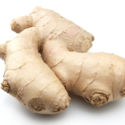
Ginger
This can double the effect of thermogenesis from other foods, according to a 2012 study. It found that people drinking a tea made from 2g of powdered ginger generated twice as much thermic energy after a meal than those who just drank hot water.
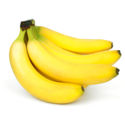
Bananas
Bananas have a rich vitamin and mineral content, which aids thyroid function. But research group Mindlab also found that eating yellow foods cheers us up, as we associate the colour with warmth and sunshine. Bananas are also a good way to quickly top up glycogen stores.
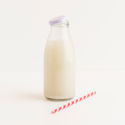
Dairy
Milk, yogurt and some cheeses contain whey protein, and whey itself contains a substance called l-carnitine that helps animals combat cold more easily. Dairy products are also a good source of iodine, which helps to keep the thyroid gland functioning well.
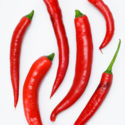
Chillies
These stimulate heat sensors in the mouth, and this creates an instant feeling of heat. But that’s not all – researchers have found that capsaicin, the chemical that makes chilli spicy, also directly triggers the process of thermogenesis.
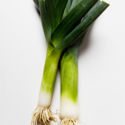
Leeks and onions
In traditional Chinese medicine, alliums such as leeks and onions have a warming effect on the body; this has been backed by several studies which suggest that onions improve circulation by helping arteries and veins widen.












